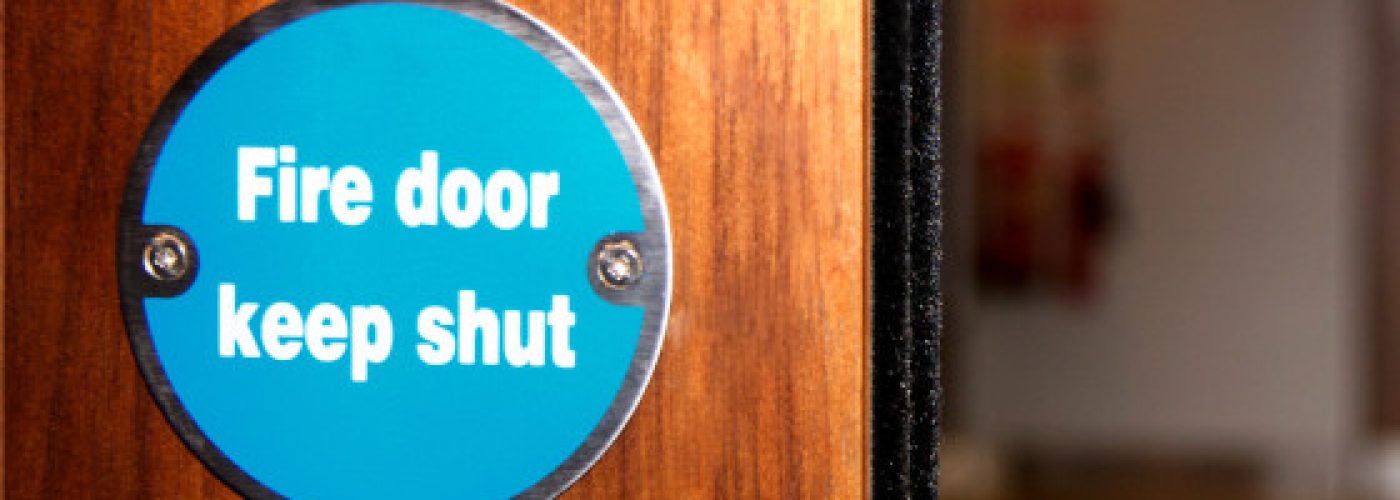The Grenfell Tower Inquiry (Phase 1) identified numerous failings including compromised escape routes and fire doors that did not, through damage and/or disrepair, act in the way that they should to prevent smoke and gases from spreading.
As such, the Inquiry recommended (Recommendations 33.29 (a) and (b)) that the owner and manager of every residential building containing separate dwellings carry out an urgent inspection of all fire doors to ensure compliance with current legislative standards and that regular (no less than every three months) checks be carried out to ensure all fire doors are fitted with an effective self-closing device which is in working order.
The Inquiry also recommended (Recommendation 33.30) that all those who have responsibility for the condition of the entrance doors to individual flats in high-rise residential buildings (with unsafe cladding) be required by law to ensure these doors comply with current standards.
As a direct result, Article 24 of the Regulatory Reform (Fire Safety) Order 2005 introduces enhanced fire safety regulations. The Fire Safety (England) Regulations 2022 were published on 6 December 2022 and came into effect in England from 23 January 2023.
The regulations introduced changes with regards to fire doors which have an impact for the Responsible Person. They require responsible persons in multi-occupied residential buildings which are classed as high-rise buildings, (defined in The Fire Safety (England) Regulations as a building at least 18 metres in height or at least seven storeys), and also those above 11 metres in height in an identical use of multi-occupation residencies where communal areas and escape routes exist, to provide new additional safety measures with regards to the periodic and ongoing inspection of fire resisting doorsets.
Quarterly inspections
It is now a legal requirement in high-rise buildings and multi-occupied residential buildings more than 11 metres in height to undertake quarterly inspections of fire resisting doorsets (including their self-closing devices) in the common areas, as these doors are subject to considerable use and subsequent failings or damage. This includes (but is not limited to) cross-corridor fire doors, staircase enclosure fire doors, and fire doors of protected lobbies and higher risk rooms such as plant rooms, riser shafts, and storage areas.
Annual inspections
The new Fire Safety Regulations also state that it is now a legal requirement to carry out annual checks of fire resisting entrance doorsets to apartments or flats on a ‘best endeavours’ basis, with a procedure identical to the above, identifying and recording findings and actioning any remedial works required to return the door to a compliant nature.
Information for residents
The Responsible Person must also now provide residents with information relating to the significance of fire doors to a building’s fire safety, highlighting the importance of not removing or disconnecting self-closing devices, keeping fire doors closed, and immediately reporting any faults or damage to doors. This needs to be documented to ensure all residents are provided with the directive to protect the entire building and its occupants. Residents must receive this information when they move into a multi-occupied residential building, and on an annual basis thereafter. As a fire risk assessor inspecting such premises, there exists a requirement to evidence these practices, to identify failings, and make suitable and sufficient recommendations in the remedy of such failings.
Fire risk assessments
The Fire Safety Act 2021 also states that ‘the effect of the Act will be to require fire risk assessments of buildings with two or more sets of domestic premises to be updated to take account of doors, if they have not already done so.’ This is detailed in section 9 as affecting ‘all doors between the domestic premises and the common parts (e.g. entrance doors to individual flats which open to common parts).’ This means that the Responsible Person should regularly review the fire risk assessment of their building(s) to ensure compliance, particularly if there is reason to believe it is no longer valid, or if significant change in the matters to which it relates has taken place. If these measures have already been considered within the existing current fire risk assessment, it is not necessary to have another fire risk assessment carried out whilst it remains compliant with this directive. Fire door inspection surveys
Whilst a suitable and sufficient fire risk assessment typically involves a review of the condition of existing fire doorsets, it is unlikely that it will extensively cover all fire doors and frames so a fire door inspection survey may be required. At the FPA, our fire door inspectors conduct comprehensive, non-destructive fire door surveys and deliver detailed reports on the condition of the entire doorset. Find out more about the FPA’s fire door inspection survey service.
Building, Design & Construction Magazine | The Choice of Industry Professionals





